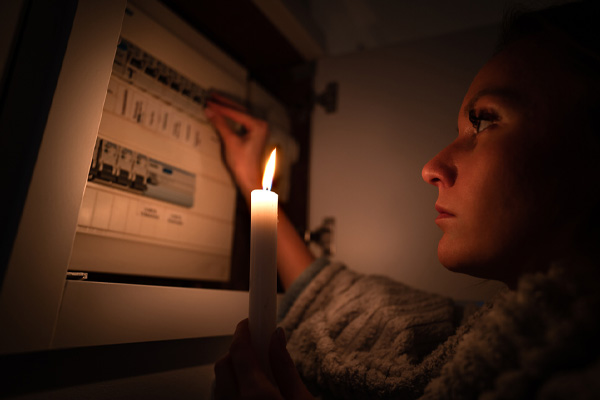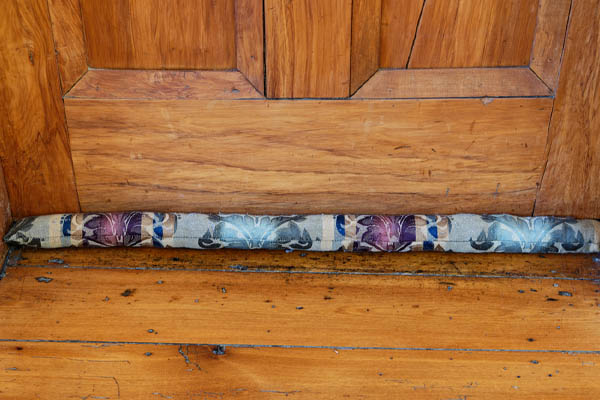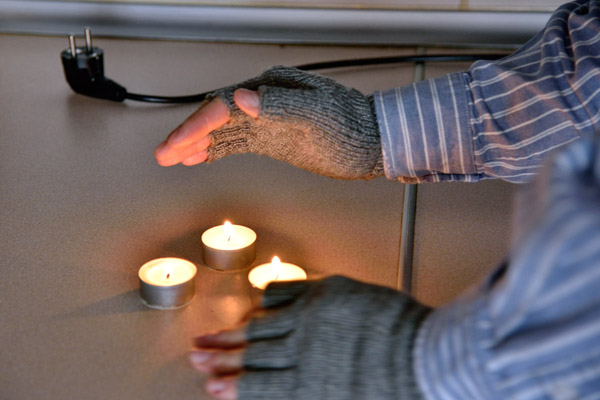Why A Gas Furnace Doesn’t Work Without Electricity

Winter can make life harder. Many struggle to get up in the morning and do their regular routines because of the bitter cold. A gas furnace can make the season bearable by keeping your home warm. However, heating may not be available if the grid fails and electricity goes out. Your home will instantly turn dark, cold, and gloomy. This may come as a surprise to some since the furnace depends on fuel for combustion. However, other components of the heating system rely on electricity to operate. Don’t fret. You can keep your family safe and warm during an outage with a few simple hacks.
In this article, we answer the question, “Will a gas furnace work without electricity?”. We also share some strategies to stay warm in the event of an electrical outage.
Why A Gas Furnace Doesn’t Work Without Electricity
Table of Contents
A gas furnace draws fuel from the pipe network of utility companies. The supply should remain steady in a power outage, so people may expect the heating system to keep going no matter what. Alas, the furnace itself is not immune to the blackout. It is unlike stoves that run purely on gas. Some key components need electricity. Outages make them unresponsive, making the entire system fail to generate heat. Let’s look at each of these one by one.
The Electric-Powered Parts of a Furnace
- Relays: These are the switches that regulate how the gas flows into the furnace. It also controls the thermocouple, which is one of the safety devices built into the system.
- Circuit Boards: The furnace has circuits that can receive and interpret signals coming from the thermostat. These allow the system to respond to the needs of the home.
- Blower Motor: The motor makes the fan blades turn to facilitate air movement across the network of ducts. Heated air from the furnace travels to different rooms to keep everyone warm throughout the day.
- Electronic Ignition: New furnace models no longer rely on a pilot light to ignite a fire. They use a more energy-efficient electronic ignition module to activate the burners. Power is essential for the heating system to start up.
All of these are critical to furnace operation. If one of them can’t get power, the whole system will not function as intended. Electricity keeps everything going.
How to Stay Warm without Electricity
Do not panic if your gas furnace shuts off during a power outage. You can stay warm for extended periods despite raging snowstorms outside your home. The temperatures may plunge but you will be alright for as long as you act wisely. Below are some of the ways in which you can generate and capture heat without electricity:
1. Cover the Cracks and Gaps

The warmth created by the furnace prior to the outage can keep the home toasty for a while. Just make sure that the hit air does not escape through cracks and gaps around the home. Prevent cold air from getting inside as well. Before winter comes, you should also seal the windows and walls with caulk and weatherstrips. It will lower your energy consumption and heating bills, so it will serve you whether you experience a power failure or not.
Are you sensing cold drafts around your home? You may place rags or towels beneath doors to block cold air from entering occupied spaces. Do the same for other gaps that you may find. You can use thick curtains for the windows. Secure the material with tape if necessary.
2. Layer Up
Every person has a different level of tolerance for cold temperatures. Some members of the family might feel fine after eliminating the drafts, while others need to hide under the covers. If you are among the latter group, put on more layers of clothing. Take out your hoodies and jackets out of the wardrobe. Thick yet breathable fabric is ideal to keep your core warm without making you sweat. Cover your extremities with socks, hats, gloves, and neck scarves.
3. Close the Envelope
Sealing the gaps won’t do much good if you keep opening the doors and windows. These should stay shut for as long as possible to prevent cold air from blowing in. Minimize your trips outside the house by planning your errands and coordinating your schedule with the family.
4. Light Candles

Not everyone has a fireplace to keep them warm. However, most people can stock up on candles and light these up if the power goes out. These provide light and heat at the same time. If one is inadequate, use several of them in key areas like the living room.
Exercise caution when dealing with open flames. Even small candles can create big problems if you are careless in handling them. Place them on a fire-resistant stand away from flammable materials such as books, carpets, rugs, curtains, plastic, and wood. Keep their distance from gas-powered appliances such as ovens and stoves. They should be on a level platform to prevent accidental falls to the floor.
The flames tend to pique the curiosity of kids and pets. They may play with the candles while you are not looking and create undesirable situations. Put lighted candles on hard-to-reach areas, but make sure that they won’t get knocked over easily. Do not leave them unattended for long periods. If you are going to bed, put the candles out.
5. Eat Hot Meals
Use the stove to heat up food before consumption. You could make soups and stews to make your body warm from the inside. You may also drink hot tea, coffee, milk, or chocolate.
6. Sleep with Hot Water Bottles
Since it is dangerous to sleep with lighted candles, you need something else to keep you warm throughout the night. Hot water bottles are ideal for this situation. Just pour hot water into sealed containers to prevent spills. Wrap these in towels to prevent direct contact with the skin and regulate their temperature.
How to Deal with the Furnace After a Power Outage
Once the power comes back, you will probably want to start up your heating system as soon as possible. However, the furnace does not always respond favorably. Check the gas valve and reset the safety lock to make sure that everything is in order. If these are not the cause of the problem, there may be a deeper underlying issue. Do not experiment with the furnace. You could make matters worse. The best thing that you can do is to turn off the power supply and ask a technician to come over for an inspection. Professionals can ensure your safety while troubleshooting. They can quickly identify and solve the problem.
Conclusion
The gas furnace is your main shield against cold weather. While there are other ways to stay warm, none of them provides the same level of comfort and convenience. Keep your furnace in top shape to make it a dependable ally. Make it a habit to inspect, clean, and maintain the system. Contact professionals if you encounter advanced issues for immediate resolution.
Call Hart Home Comfort for Your HVAC Requirements
 Hart Home Comfort is the top choice among the residents of Nassau County, Suffolk County, and Queens, New York. Our certified technicians are here to help no matter what heating or cooling issues arise. You can count on them whenever your HVAC system requires professional services.
Hart Home Comfort is the top choice among the residents of Nassau County, Suffolk County, and Queens, New York. Our certified technicians are here to help no matter what heating or cooling issues arise. You can count on them whenever your HVAC system requires professional services.
Competitive pricing and customer satisfaction are guaranteed. You can put your faith in our reputation and expertise. We’ll do everything to make your home safe and comfortable, no matter the season. We will respect your budget by offering suitable solutions. Schedule an appointment with Hart Home Comfort to get a free, in-home estimate.
For any questions about what Hart Home Comfort can do for you, give us a call today. Click here to contact us now or call us at (631) 667-3200 to find out more! Click the link to view our service area.